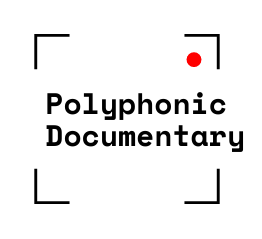After developing a pilot on Korsakow, as described in our previous blog post, we focused on developing our second pilot using Stornaway and the same audiovisual content. The reason to do so was to draw a parallel and comparison between the two authorial tools in relation to our Polyphonic project.
So, the clips that we received (25 responses from around the world consisting of 3-5 short video clips per participant on what polyphony meant to them) are now visible, comparable and ‘playable’ on both platforms.
This is the result on Stornaway (please see our previous blog post for the link to the Korsakow pilot).
We would like to state again that this was designed as a part of an experimental process to promote further dialogue and exchange among our fellow participants, in the spirit of trying out ideas and learning together.
Initial thought on the ‘practice’ process should focus on (but not be limited to) the following concepts:
- Transformational and non-linear approaches to narrative
- Interest in relations, patterns and correlations
- Exploration of navigational aesthetics and user friendly design
- The role of practice-based research in developing understanding of polyphony
- Ways in which design processes feed into theory and vice versa
What we have found striking about both pilots is the focus in the clips on reflection, emotions, and place. The clips somehow speak to each other, not in a narrative-driven way but more relationally, as a series of individual yet also collective responses to polyphony.
The clips were filmed at a time when many of us were either in, or just starting to emerge from lockdown, due to the Covid 19 pandemic. It is noticeable that many of them are quite introspective and/or attuned to the more-than-human.
We could have organised the clips according to a number of different categories such as contributor name or theme (eg urban, rural, reflexive, observational). Instead, we chose place, in response to the pandemic and the ethos of sheltering in place.
In order to navigate and enjoy the vision of these pilot interactive films, viewers should forget about story structures and editing processes in traditional terms, and see the individual clips as entities that exist in a coherent way in relation to each other.
This approach often threw up surprises whilst making these pilots, because the tools used are capable of revealing patterns and relations that are not always the most obvious ones.
In other words, the clips offer alternative and multiple perspectives as an exercise in pattern-making. These tools are combinatory engines that create relationships and open up dialogue between individual bits of content.
The process of making these pilots, in combination with the theoretical framework we developed for the project, showed us that the aesthetics of polyphony described in our article “The Poetics and Politics of Polyphony: Towards a Research Method for Interactive Documentary” can be only fully defined through the process of making.
Through this practice-based research, we are now able to demonstrate more fully the aesthetics of polyphony as “a wider field of production of value”, linking this to Guattari’s work on “ethico-aesthetic kindness towards the other” (Aston, Odorico 2018).
The next step will be a meeting with everyone who contributed clips to discuss the two interventions in relation to the points made at the beginning of this post, as well as the editing process of the two interactive films and the findings/considerations that arose during the ‘practice’ process.
Furthermore, we will run two workshops (funded by the Screen Industries Growth Network) on the polyphonic potential of the tools with the creators of Stornaway and Korsakow: Ru Howe and Florian Thalhofer.
We will open the project out to all participants to make their own creative responses to these initial two interventions. We will also collectively consider what to do next, in particular what should be the main topic of our next intervention, opening up the opportunity to participate to new members.
Judith and Stefano
